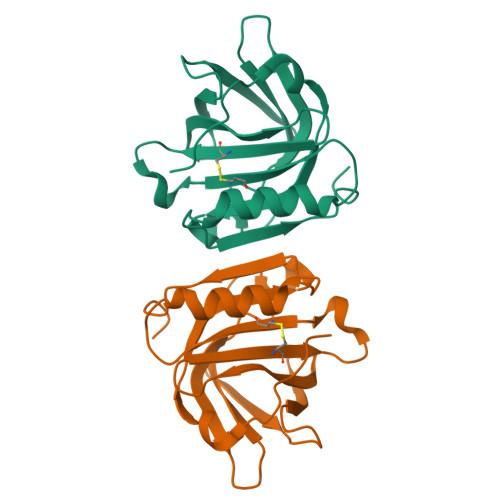Structure and stability of Gyuba, a patched chimera of b-lactoglobulin
Ohtomo, H., Konuma, T., Utsunoiya, H., Tsuge, H., Ikeguchi, M.(2011) Protein Sci 20: 1867-1875
- PubMed: 21853497
- DOI: https://doi.org/10.1002/pro.720
- Primary Citation of Related Structures:
3KZA - PubMed Abstract:
β-lactoglobulin (LG) contains nine β-strands (strands A-I) and one α-helix. Strands A-H form a β-barrel. At neutral pH, equine LG (ELG) is monomeric, whereas bovine LG (BLG) is dimeric, and the I-strands of its two subunits form an intermolecular β-sheet. We previously constructed a chimeric ELG in which the sequence of the I-strand was replaced with that of BLG. This chimera did not dimerize. For this study, we constructed the new chimera we call Gyuba (which means cow and horse in Japanese). The amino acid sequence of Gyuba includes the sequences of the BLG secondary structures and those of the ELG loops. The crystal structure of Gyuba is very similar to that of BLG and indicates that Gyuba dimerizes via the intermolecular β-sheet formed by the two I-strands. Thus, the entire arrangement of the secondary structural elements is important for LG dimer formation.
Organizational Affiliation:
Department of Bioinformatics, Soka University, 1-236 Tangi-cho, Hachioji, Tokyo 192-8577, Japan.




















